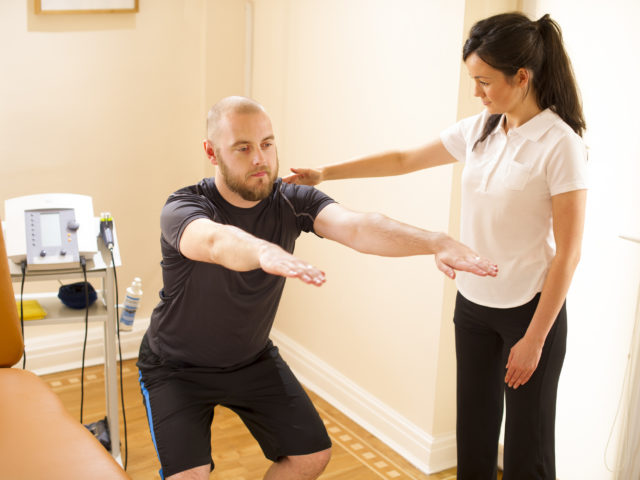Aging is a natural part of life, but it often comes with physical challenges that can affect a senior’s ability to live independently and maintain their quality of life. Reduced mobility, pain, and the risk of falls are common concerns among older adults. Fortunately, physical therapy offers a powerful solution to address these issues and help seniors regain their mobility and independence. In this blog post, we will explore the role of physical therapy in improving the lives of seniors and enhancing their overall well-being.
Understanding the Needs of Seniors
As individuals age, their bodies go through various changes, which can lead to a range of physical challenges. Some of the common issues that seniors face include:
1. Muscle Weakness and Atrophy
Muscle mass naturally decreases with age, leading to muscle weakness and a higher risk of falls.
2. Joint Stiffness and Arthritis
Arthritis and joint stiffness can make movements painful and challenging.
3. Balance and Gait Problems
Poor balance and difficulties with walking increase the risk of falls, which can have serious consequences for seniors.
4. Post-Surgery Rehabilitation
Seniors may undergo surgeries such as joint replacements or hip fractures, and physical therapy is often necessary for a successful recovery.
5. Chronic Pain
Conditions like osteoarthritis, back pain, and neuropathy can cause chronic pain, limiting a senior’s ability to engage in daily activities.

The Role of Physical Therapy
Physical therapy is a non-invasive and effective way to address these challenges and improve the overall well-being of seniors. Here’s how physical therapy plays a vital role in enhancing the lives of older adults:
1. Assessment and Individualized Treatment
Physical therapists conduct thorough assessments to identify a senior’s specific needs, strengths, and limitations. Based on this assessment, they create personalized treatment plans tailored to the individual’s goals and abilities.
2. Pain Management
Chronic pain is a common issue among seniors. Physical therapists use various techniques, such as manual therapy, therapeutic exercises, and modalities like heat or cold therapy, to manage pain and improve mobility.
3. Strength and Conditioning
Physical therapists design exercises to build and strengthen muscles, addressing muscle weakness and atrophy. Strengthening exercises can improve balance and prevent falls.
4. Balance Training
Balance problems are a significant concern for seniors. Physical therapists incorporate balance training exercises to help older adults regain their stability and reduce the risk of falls.
5. Gait Training
Gait problems can make walking difficult and unsafe. Physical therapists work on improving a senior’s walking pattern and stride, allowing for safer and more efficient mobility.
6. Fall Prevention
Falls can have serious consequences for seniors, leading to fractures and other injuries. Physical therapists assess fall risk and develop strategies to prevent falls, including exercises to improve balance and coordination.
7. Post-Surgery Rehabilitation
After surgery, such as joint replacement or hip fracture repair, physical therapy is essential for a successful recovery. Therapists guide seniors through exercises and movements that promote healing and restore function.
8. Functional Independence
Physical therapists focus on improving a senior’s ability to perform daily activities independently. This includes tasks such as dressing, bathing, and preparing meals.
The Benefits of Physical Therapy for Seniors
The advantages of physical therapy for seniors are extensive and encompass both physical and psychological aspects of well-being:
1. Improved Mobility
Physical therapy helps seniors regain mobility and independence. This means they can continue to engage in activities they enjoy, whether it’s gardening, traveling, or spending time with family and friends.
2. Pain Relief
Chronic pain can be debilitating and affect a senior’s quality of life. Physical therapy offers effective pain management techniques, allowing older adults to live more comfortably.
3. Fall Prevention
Falls are a significant concern for seniors. Physical therapy reduces fall risk by improving balance, coordination, and strength.
4. Enhanced Quality of Life
Physical therapy not only addresses physical limitations but also boosts self-confidence and emotional well-being. Seniors often report an improved overall quality of life after undergoing therapy.
5. Avoiding Surgery
In some cases, physical therapy can help seniors avoid the need for surgery by improving their condition or delaying the progression of musculoskeletal issues.
6. Medication Reduction
Physical therapy can reduce the need for pain medications, minimizing the risk of side effects and dependency.
7. Social Engagement
Improved mobility allows seniors to stay socially active, reducing feelings of isolation and loneliness.
8. Independence at Home
By addressing functional limitations, physical therapy supports seniors in maintaining their independence at home for as long as possible.
Types of Physical Therapy Interventions
Physical therapists use a variety of interventions to address the specific needs of seniors. Some of these interventions include:
1. Manual Therapy
This hands-on approach involves techniques such as joint mobilization and soft tissue manipulation to improve joint mobility and reduce pain.
2. Therapeutic Exercises
Physical therapists prescribe exercises that target specific muscle groups to improve strength, flexibility, and endurance.
3. Modalities
Modalities like heat, cold, ultrasound, and electrical stimulation may be used to relieve pain and reduce inflammation.
4. Functional Training
Seniors learn how to perform everyday tasks safely and efficiently, promoting independence.
5. Aquatic Therapy
Water-based exercises in a pool provide buoyancy and reduce stress on joints, making it ideal for seniors with arthritis or joint pain.
Conclusion
Physical therapy is a vital resource for seniors looking to improve their mobility, manage pain, and maintain their independence. Whether it’s addressing chronic pain, preventing falls, or assisting with post-surgery recovery, physical therapy plays a crucial role in enhancing the overall well-being of older adults. Seniors should consult with their healthcare providers to explore the benefits of physical therapy for pain and create a personalized plan to help them enjoy a fulfilling and independent life as they age.
